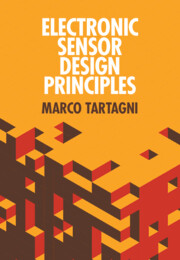Book contents
- Electronic Sensor Design Principles
- Electronic Sensor Design Principles
- Copyright page
- Dedication
- Contents
- Preface
- Part I Fundamentals
- 1 Introduction
- 2 Sensor Modeling and Characterization
- 3 Sensor Design Optimization and Tradeoffs
- 4 Overview of Mathematical Tools
- 5 Compressive Sensing
- Part II Noise and Electronic Interfaces
- Part III Selected Topics on Physics of Transduction
- Part IV Problems and Solutions
- Index
- References
1 - Introduction
from Part I - Fundamentals
Published online by Cambridge University Press: 23 December 2021
- Electronic Sensor Design Principles
- Electronic Sensor Design Principles
- Copyright page
- Dedication
- Contents
- Preface
- Part I Fundamentals
- 1 Introduction
- 2 Sensor Modeling and Characterization
- 3 Sensor Design Optimization and Tradeoffs
- 4 Overview of Mathematical Tools
- 5 Compressive Sensing
- Part II Noise and Electronic Interfaces
- Part III Selected Topics on Physics of Transduction
- Part IV Problems and Solutions
- Index
- References
Summary
The purpose of this chapter is to set up the framework on which the book will be shaped up and it is intentionally based on informal descriptions of concepts. This is obviously a nonrigorous approach but is a fundamental step toward an abstraction process about artificial sensing: what are the ideas behind the general definition of sensors, their main performance limiting processes and essential tradeoffs. Using this inductive approach, we will first define concepts, leaving the formalization to the next chapters of the book. However, if the reader is facing this field for the first time, the argumentation could appear vague and fuzzy; therefore this first chapter should be read again after the rest of the book as the last one.
Information
- Type
- Chapter
- Information
- Electronic Sensor Design Principles , pp. 3 - 20Publisher: Cambridge University PressPrint publication year: 2022
